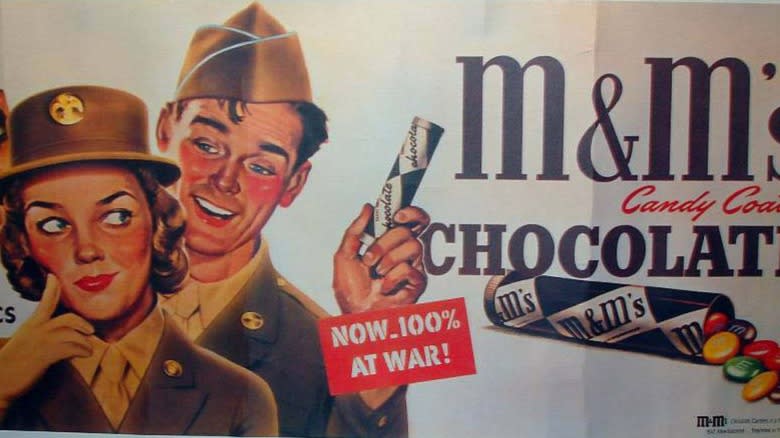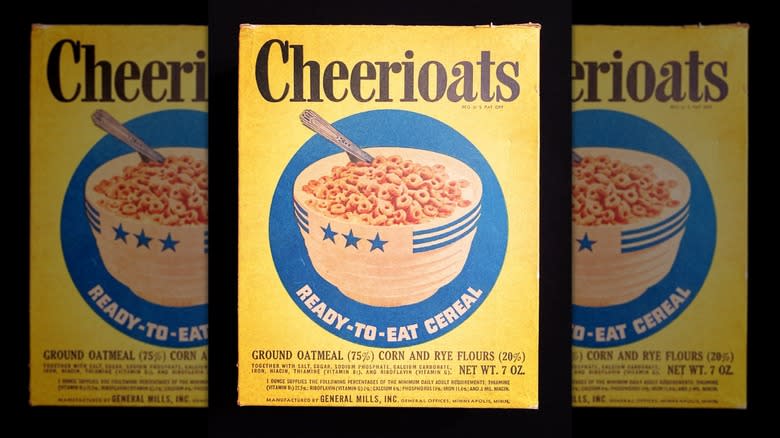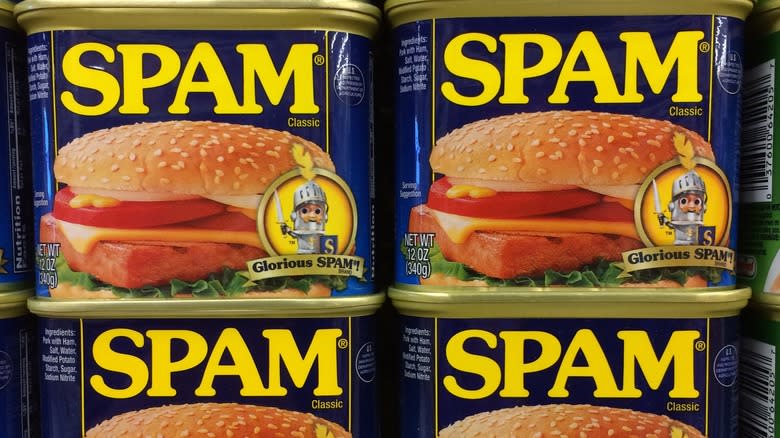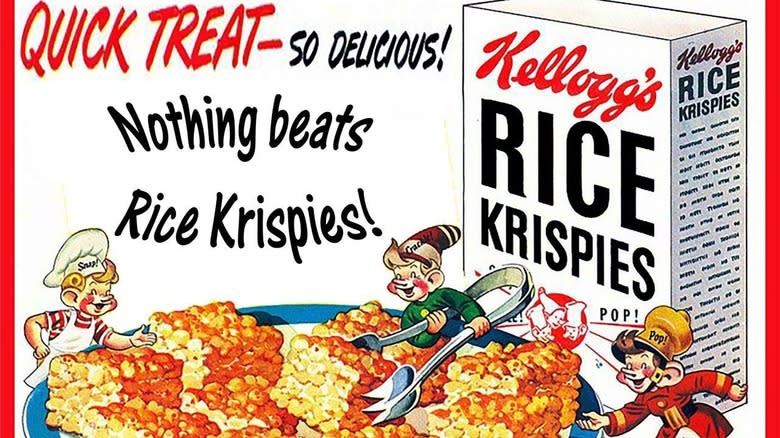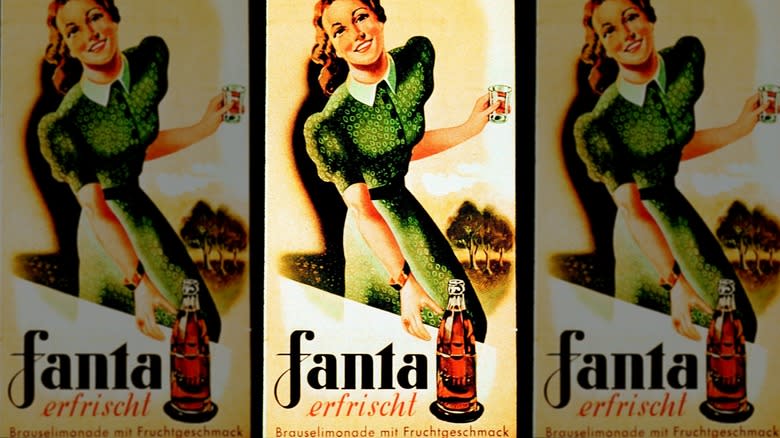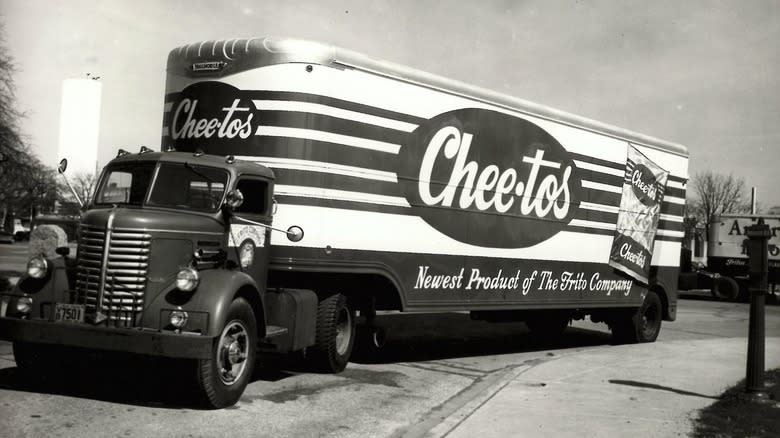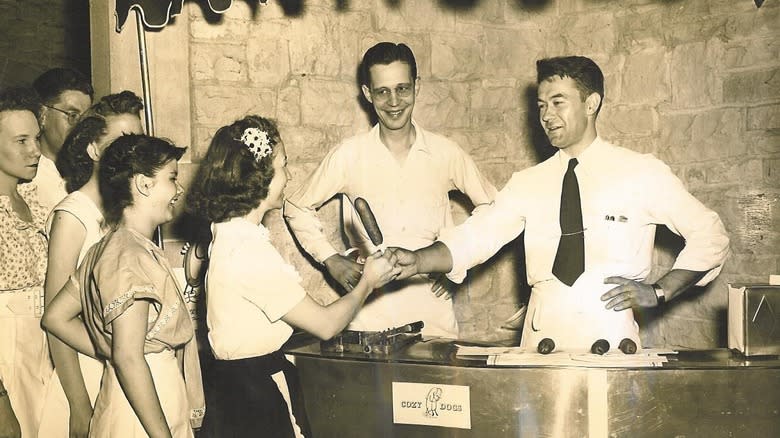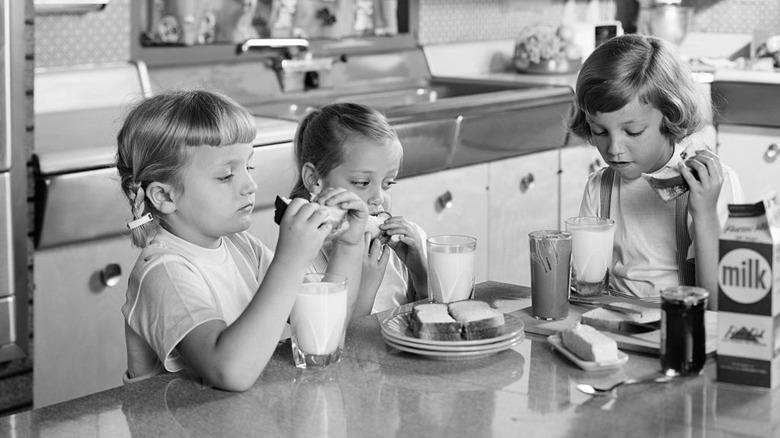World War II, perhaps the most influential event of the 20th century, had an enormous impact on food security. While the war effort created an unparalleled demand for industrial food production to feed troops around the world, the war itself also generated unprecedented levels of food scarcity amongst the civilian populace. Meals during wartime became a cornerstone of efficiency and ingenuity, with rations, rationing, sanctions, and embargos dictating the food available to individual populations across the globe.
Scarcity was a fact of daily life for many households before, during, and after the war. In places that weren't subjected to starvation, families still had limited access to foods formerly regarded as pantry staples. With an emphasis on shelf-stable ingredients and unconventional flavor combinations, the food consumed during the war sparked many creative solutions to keep people fed and transformed the modern diet by popularizing new forms of food processing and food preservation technologies.
Whether it was an attempt to navigate rationing on the home front or execution of military orderliness to fortify front lines, many of the convenience foods we see on grocery shelves today were invented because of or in direct response to World War II. Here is a list of nine well-known snacks that World War II made mainstream, proving that the war, which forever changed the world, did the same for how we eat.
Read more: What These Imitation Foods Are Actually Made Of
M&M's
M&M's are inextricably linked with wartime. They started when Forrest Mars, son of an American candy magnate, fled to Europe in the 1930s after becoming estranged from his father's candy company. Mars invented the Mars Bar while in the United Kingdom and sold it totroops.
But despite the success of his chocolate, Mars saw something with even more commercial potential around this time. When he was visiting Spain during the Spanish Civil War, he saw off-duty soldiers consuming bite-sized pieces of candy-coated chocolate. Mars noticed that the candy coating prevented these chocolates from melting.
Produced by Rowntree's -- which would later be bought out by Nestlé --the sweetsMars saw were likely a snack calledChocolate Beans.These treats were renamed Smarties in 1937. There isspeculationabout whether or not Mars had any kind of formal agreement with Rowntree's to replicate these candies in the United States.
Regardless, Mars promptly returned to the U.S. with designs to produce similar candy-coated chocolates. Mars sought a partnership withBruce Murrie, son of the candy magnate running the Hershey's empire. Naming the company after the initials of their last names, the men's partnership ensured that the original M&Ms were filled with Hershey's chocolate. First released in 1941, M&M's were sold exclusively to the U.S. military.American soldiers became so accustomed to eating M&M's overseas that they kept demand for the candy when they returned home. Once M&M's reached the public, the rest was history.
Cheerios
Originally called "Cheerioats," the beloved General Mills cereal brand was invented in 1941 --the same year that America entered World War II. To support the war effort, Cheerioats printed advertisem*nts in the 1940s centered around a mascot, Cheeri O'Leary, emphasizing that America should eat well to stay in fighting form.
Set apart from Kellogg's Corn Flakes and Washburn's Wheaties, Cheerioats werethe first oat-based breakfast cereal to reach the American masses, originally marketed as an easier, tastier replacement for oatmeal. The brand contributed to the nationwide shift towards cereals as a go-to morning meal, redefining the American breakfast,as war rations limited the availability of traditional bacon and eggs.
Cheerioats sold over 21 million boxes in its first year of production and quickly became General Mill's most popular cereal in the years following the war. In 1945, Cheerioats was pressured to change its name after Quaker Oats complained that "oats" in the cereal title was a trademark infringement. This prompted the shift to the name Cheerios, which spoke more of the cereal's shape than its ingredients.
Having established a reputation for nutrition and convenience as a vitamin-fortified cerealwith no cooking necessary, Cheerios continued to hold a place of prominence on American breakfast tables when the postwar baby boom created a demand for quick and wholesome breakfasts. Since introducing new flavors, Cheerios has only continued to grow in popularity, enjoyed as a snack just as often as for breakfast. Today, Cheerios are one of thebest-selling cereals in America.
SPAM
A vacuum-sealed mixture of pork, ham, salt, sugar, potato starch, and sodium nitrate, SPAM started as a greater source of suspicion than sustenance when it was first introduced to Americans in the 1930s. American households were reluctant to eat meat that didn't require refrigeration, but this contrastingly became SPAM's prime selling feature when it attracted the U.S. military's search for canned meats to mass-produce for soldiers overseas. SPAM reached both the European and Pacific theaters, becoming popular in the U.K., where strict rationing had contributed to greater food scarcity, and in the Asian Pacific, since its shelf life could survive tropical climates.
American soldiers, however, enjoyed making fun of SPAM more than eating it, and Americans in the contiguous homeland served it largely out of a sense of civic duty. But in Hawaii and the Asian Pacific, SPAM became a resource of necessity.
Rather than facing internment like the Japanese Americans in the mainland U.S., the residents of Hawaii were punished with aban on deep-sea fishing, since the industry was predominantly run by Japanese Americans. Having lost an important source of income and protein, islanders resorted to adding SPAM to their diets. Further into the Pacific, people in Japan and Korea welcomed SPAM as a food source against the threatening starvation that increased around the time of the war's end. These cultures incorporated SPAM into dishes that have become mainstays in their cuisines decades later, such as spam musubi, budae jjigae, and loco moco.
Rice Krispies Treats
Rice Krispies first came to grocery shelves in 1928, but Rice Krispies Treats didn't appear until a decade later. Credited to Mildred Day, an employee in the Kellogg's Home Economics Department, the recipe for these sticky squares was likely a variant on earlier recipes that bound puffed cereals with molasses. According to an interview with Day's daughter for the Des Moines Register, Day's job entailed testing recipes in Kellogg's company kitchens. In 1939, she was enlisted to test out an experimental Rice Krispies recipe to help an outfit of Camp Fire Girls who were trying to fundraise.
Today a co-ed youth development group, Camp Fire, was initially founded in 1910 as Camp Fire Girls of America to promote outdoor activities and prompt girls to challenge gender roles. As part of their activities, Camp Fire Girls contributed home front efforts towards both World Wars. During World War II, many of the Camp Fire Girls' efforts directly connected people in need with the proper resources. Selling Rice Krispies Treats was an example of the members' efforts to raise funds for greater causes.
Crafted under Day's supervision, these "marshmallow squares," as they were originally known, proved to be an instant success. The no-bake recipe calling for butter, Rice Krispies, and marshmallows was a simple, tasty, and portable treat for the Camp Fire Girls to sell door-to-door. Kellogg started printing this original recipe on its Rice Krispies boxes in 1941, and this same recipe has appeared on Rice Krispies boxes since.
Fanta
Coca-Cola was bottled in Germany starting in1929.The company continued to sell its products to Nazi Germany when war broke out in Europe. By 1940, Coca-Cola was a favored Nazi beverage, but access to this elixir halted abruptly when the Japanese bombed Pearl Harbor in 1941. This event solidified America's entry into the war and prevented American companies from continuing business with enemy nations. The German branch of Coca-Cola ran out of the ingredients required to make Coca-Cola, which was why itinvented Fanta during World War II to quench a national thirst.
The original Fanta (a shortening of fantastisch, the German word for fantastic) was different from the brightly colored varieties we might recognize today. The first Fanta came from the byproducts of byproducts in wartorn Germany, flavored with apple pulp leftover from making cider; whey cast aside from the cheese industry, and beet sugar for sweetener. The result was a beverage that resembled Coca-Cola only in its murky brown coloring.
Although the drink may have tasted a little odd with its faint cheesy flavor, it became a symbol of national pride. Germans across the Third Reich consumed Fanta, creating enough of a market for the drink that Coca-Cola kept producing Fanta after the war. Despite the drink's ties to Nazi Germany, the beverage has since become globally popular. Fanta got its first rebrand in Italy in 1955 when the color and flavor were shifted to orange. Today, there are over 200 Fanta flavors across the globe.
Cheetos
While this crisp, cheesy snack wasn't exactly invented in World War II, the cheese powder that defines Cheetos came directly from the dehydration experiments the U.S. military conducted to produce more efficiently and ship soldiers' rations. Dehydrating meals crammed more calories into the same-sized shipments -- anything that was still technically edible once moisture was removed -- all produce, eggs, and even cheese -- got condensed into bricks to fuel the war machine.
Dehydrated cheese took the form of powder, and since the military's reconstituted Wisconsin cheddar couldn't be turned back into anything else, it got sprinkled over all kinds of things as a seasoning. The military's industrial quantities of cheese dust left an enormous surplus with the war's end in 1945, and the only industry that then had a market for such ingredients was the budding trade of convenience snacks.
In 1948, the military sold its vast quantities of leftover cheese powder to Charles Doolin, who owned the Frito Company. Using the same corn-based recipe that produced Fritos, Cheetos (first called Chee-tos) was a variant of cheese-flavored Fritos but also an entirely new kind of snack profiting from dehydrated cheese's long shelf life and authentic cheese flavor. Eventually, the purveyor of America's first real cheese snack merged his company with Herman W. Lay's well-known snack brand, creating the company known as Frito-Lay. While Frito-Lay's Flamin' Hot varieties may be more popular today than the original cheese recipe, Cheetos' many forms remain well-loved for their distinct texture and flavor.
Corn Dogs
When Americans at home refused to limit their meat consumption to help feed troops overseas voluntarily, the government began to restrict what American households could consume. In 1943, with rationing enforced, adults were permitted 2.5 pounds of meat per week. There was a limit on the amount of beef or steak that could fit this measurement, but processed meats were always fair game. Many Americans consequently ate more sausages and hot dogs than they otherwise might have.
Corn dogs were invented sometime in the early 1940sbefore rationing took place. But their popularity likely surged due to the serendipitous circ*mstances amidst wartime scarcity. If they couldn't have beef or steak, Americans could at least enjoy a battered and deep-fried hot dog on a stick.
Though the corn dog has fairly mysterious origins (Minnesota, Texas, Illinois, and Oregon all have claims to ground zero), the fact that this deep-fried snack popped up in numerous locations across the country may be further evidence of the right place, right time circ*mstances that brought about the corn dog's initial popularity. Corn dogs still remain a savory treat amongst fairgrounds and school cafeterias, but evolutions on the humble recipe have lately contributed to a new surge in demand. Korean corn dogs are the latest take spreading across the States, one-upping the classic recipe with sumptuous cheesy fillings and numerous toppings. Some are even covered in Cheeto dust, a combination that reunites two creations made popular during wartime.
PB&J
Sandwiches filled with peanut butter and jelly have been around since the early 1900s, but it wasn't until pre-sliced bread and commercialized peanut butter culminated in the 1930s that the perfect circ*mstances arose for a new kind of sandwich.
Peanut butter itself was originally valued as a health food for its rich source of vitamins, protein, and calories. It became an efficient source of energy during times of scarcity and fortified many families during the Great Depressionwhen households had to seek new protein sources. But it wasn't until the following decade, during World War II, that the combination of peanut butter and jelly really took off as a mainstream snack.
On the home front, a PB&J made for a convenient meal, as peanut butter was among the pantry staples that was never rationed during the war. But this sandwich combo was of even greater importance to the soldiers overseas. Both peanut butter and jelly were included in soldiers' rations, and the more enterprising among them thought to combine the two in one delicacy. The PB&J combo was a calorie-dense and energy-boosting meal that could be made and eaten quickly.
Soldiers continued craving the PB&J once they returned home, and the sandwich boomed after World War II,establishing its legacy as a household favorite amongst children and adults ever since. This winning combo of savory, sweet, and nostalgic, however, persists as a largely North American phenomenon -- other countries tend to find this combinationstrange.
Chef Boyardee
The Boiardi family were Italian immigrants who settled in Cleveland in the early 20th century, where the real Chef Boyardee, Ettore "Hector" Boiardi, and his brothers opened an Italian restaurant in the 1920s. Their authentic Italian fare was a hit with locals, bringing attention to Italian cuisine, which wasn't then very well-known in the States. The Boiardi family's flavors were such a local success that they decided to start jarring and selling their sauces.
By the 1940s, the Boiardi's canned Italian foods had attracted the U.S. military's attention, and the military commissioned the company to mass produce their products as another option for soldiers' rations. Industrial production began in 1942, turning a humble family business into a veritable enterprise. According to the company's history page, Chef Boyardee employees took great pride in their homefront patriotism, taking part in local parades with banners that proclaimed: "Keep 'em flying! Keep 'em rolling! Keep 'em well-fed!"
By the war's end, Hector Boiardi was awarded The Gold Star, one of the highest civilian honors bestowed by the military. But his first allegiance was to his employees, which is why he sold his business to a larger conglomerate after the war, so that there was no need to downsize from industrial-level production, ensuring all employees could keep their jobs. This shift brought Chef Boyardee to the masses, making ready-made meals commonplace as part of the postwar trajectory towards convenience and efficiency that has culminated into the lifestyle we take for granted today.
Read the original article on Daily Meal.
